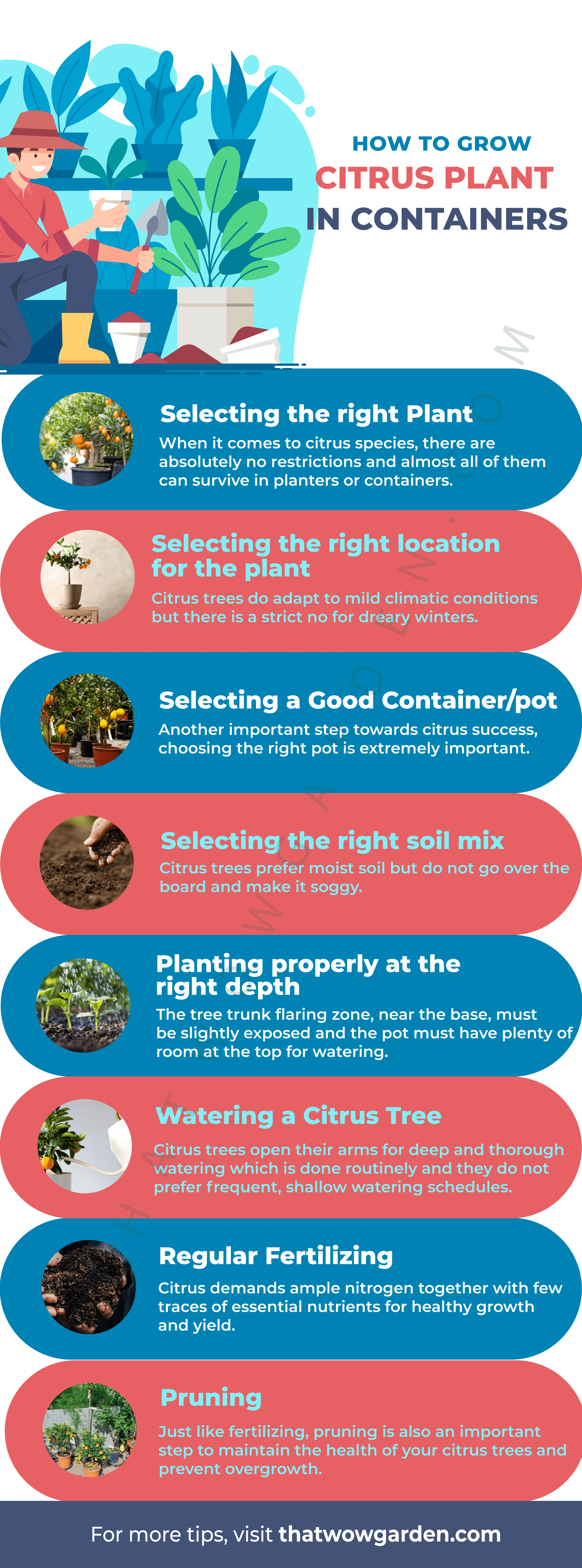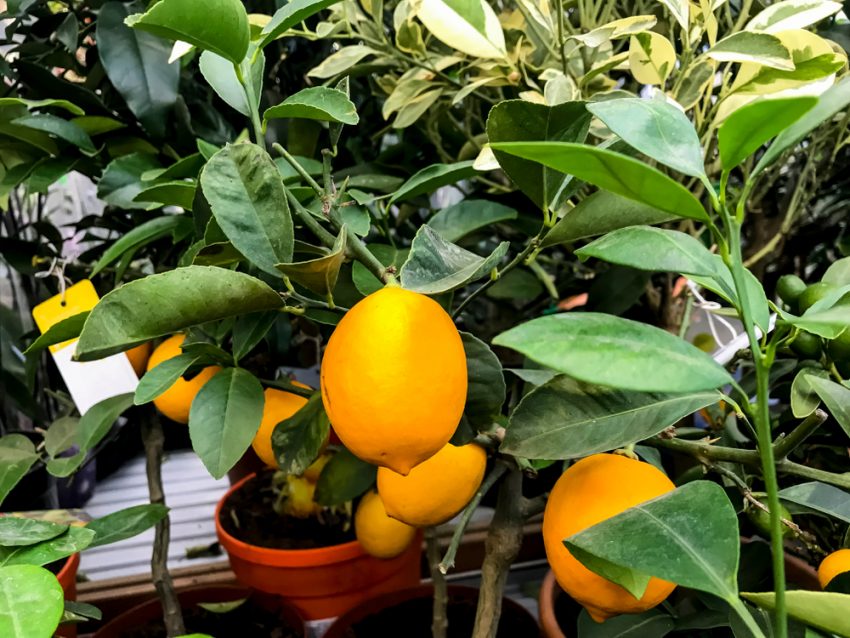Do you think homegrown, fresh citrus is a luxury and is limited to tropical zones? Well, you can grow citrus trees pretty well in containers and enjoy the zesty fruits with all the freshness!
I used to visit my grandparents every summer vacation, and God knows, I adored those citrus pots like nothing else. They had these tiny blossoms, that would eventually turn into fleshy fruits in a few months. I would visit them again during the white months and enjoy those tasty treats, freshly plucked from the greenhouse.
So, container citrus can be your freshness fix anytime, without the hassle of large garden space and climate issues. Citrus trees can survive in temperate climates as well with some extra care and love. Follow these easy steps that you must consider for your indoor citrus thumb!
How To Grow Citrus Plant In Container
1. Selecting the right Plant
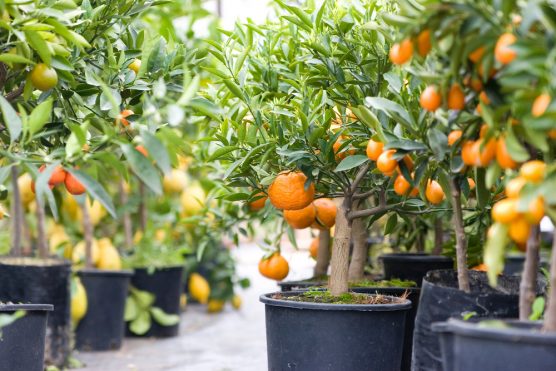
When it comes to citrus species, there are absolutely no restrictions and almost all of them can survive in planters or containers. You can also consider some easy-to-grow options like dwarf citrus trees that are smaller in size as compared to standard citrus varieties that are bulky and might not fit in an indoor setting.
Citrus like Buddha’s Hand orange, Improved Meyer lemon, and kumquats do not get taller than 12 feet and hence, they would be a good choice for indoor citrus. Also, dwarf citrus trees are well appreciated as they can flourish efficiently in home gardens with little care.
Try to bring home those trees which are at least two or three years old, mature enough to bear fruits. Choosing the right tree would be your first step towards citrus success!
2. Selecting the right location for the plant

Now by right location, I do not mean south-east coast of the pacific ocean or a breezy valley, no! I mean, yes, plants do require optimum temperatures and sunlight to survive but you can make it feel like home in your garden with some extra care.
Citrus trees do adapt to mild climatic conditions but there is a strict no for dreary winters. These sun-loving fruits enjoy clear skies and bask in the warmth, ticking all the boxes for tropical species.
If your garden falls outside the conventional citrus-growing belt, you can still enjoy these juicy fruits by setting up a frost-free greenhouse. Keep them in the sunroom during the fall and let them enjoy the fresh air when those long summer days sets in!
3. Selecting a Good Container/pot
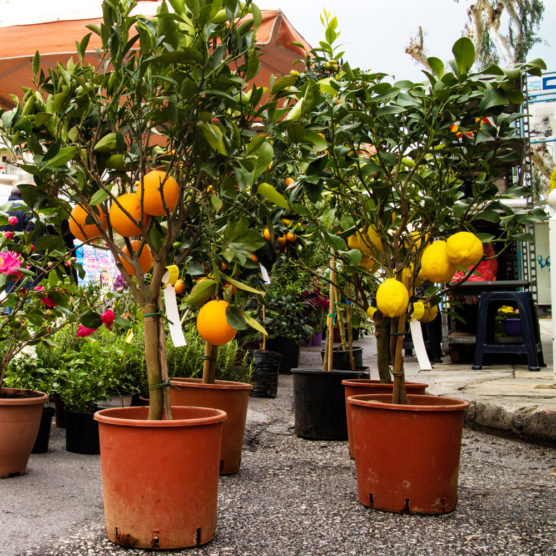
Another important step towards citrus success, choosing the right pot is extremely important. Don’t let those soothing images of sprawling Mediterranean citrus in big planters deceive you. You must start with a small pot because the tree would be small when you would welcome it home.
Wait for two to three years before you switch to a 16 to 20-gallon container from the 8-inch pot. Make sure the planters have enough room for the roots to grow as they prevent the tripping of the top-heavy trees.
Use terra cotta containers if you want both beauty and efficiency with ample drainage and good air movement. Customize the pot with a wheeled plant dolly that enhances its movability. Also, try to avoid dark-colored pots as citrus trees like to keep their roots cool!
4. Selecting the right soil mix
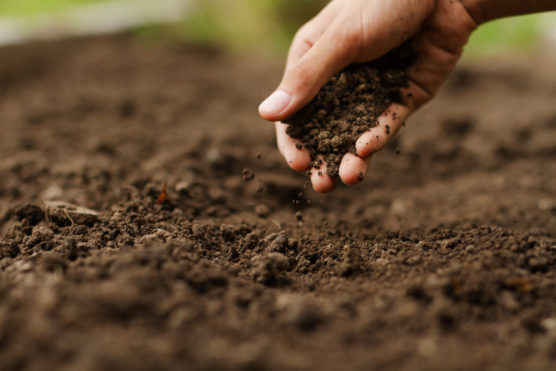
Citrus trees prefer moist soil but do not go over the board and make it soggy. Choose a potting mix that can neither dry up too fast nor drain very slowly keeping the soil too wet. Most of the time, a well-draining potting mix would do the job.
Commercial potting mixes contain perlite, compost, and peat moss that makes it perfect for plants like citrus and cactus. However, using this for a heavy potting mix might harm your dear tree.
Instead, mix it with hardwood bark chips to increase the number of air spaces for better respiration of the roots. Try to mix organic matters like earthworm castings at regular intervals to keep the nutrients balance intact.
5. Planting properly at the right depth

If you are craving for some delicious, pop-in-your-mouth treats like kumquats, head for your citrus tree right away! For a good harvest and flourish, you must take care of the planting depth as the roots need ample air to survive.
The tree trunk flaring zone, near the base, must be slightly exposed and the pot must have plenty of room at the top for watering. Citrus trees are also prone to transplant shock. Be extra cautious when you are repotting and use some post-planting boost to help the roots establish.
6. Watering a Citrus Tree

Citrus trees open their arms for deep and thorough watering which is done routinely and they do not prefer frequent, shallow watering schedules. Allow the topsoil to dry about 2-3 inches deep and shower it with water until it runs out from the drainage hole.
Usually, fully grown-up citrus needs one or two showers every week but it must be reduced to say thrice every two weeks during the cold or cloudy months. Use a soil moisture tester as they might need frequent watering during the active spring and blooming summer season.
Finally, check for the signs! Plants are generous enough to let us know when we are ignorant or extra-caring. Wilting and perking up of the leaves are generally signs of underwatering and if the leaves are turning yellow, you have overwatered!
7. Regular Fertilizing
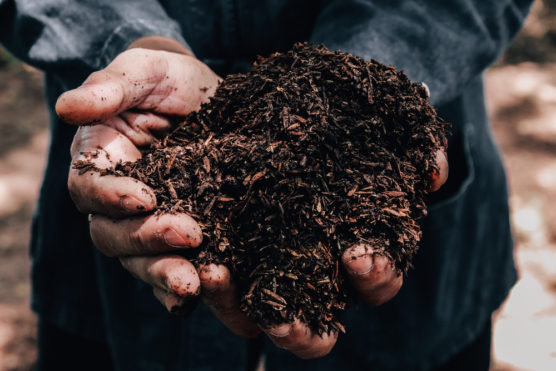
Citrus demands ample nitrogen together with few traces of essential nutrients for healthy growth and yield. Fertilize them during the spring months with double nitrogen compounds like potassium and phosphate.
The need increases as the trees mature and these slow-release plant food can feed them well over time. You can also use organic fruit tree foods that are full of essential micronutrients. Limit fertilizing during the fall and winter as the growth retards during that time and you don’t wanna overfeed your plant!
8. Pruning
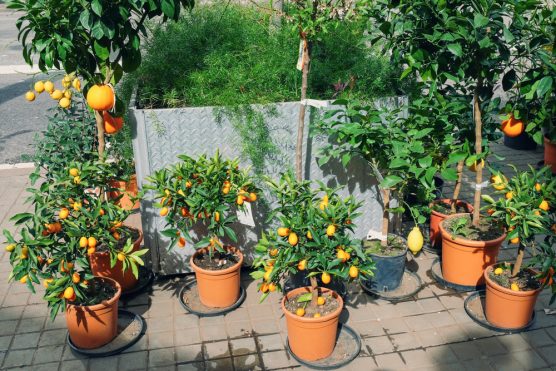
Just like fertilizing, pruning is also an important step to maintain the health of your citrus trees and prevent overgrowth. Regular pruning not only limits tree size but also promotes healthy fruit growth.
Trim off roots or shoots near the soil as they are unlikely to grow into the desired citrus variety. Remove those unwanted thorns to make the handling convenient and easy. If you are an experienced gardener, you can also prune to maintain a good shape and balance by removing leggy branches.
9. Pests
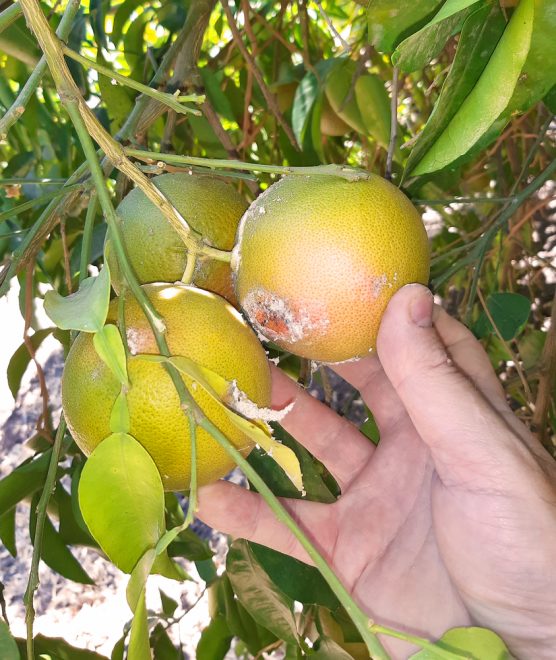
Tropical species like citrus are often invaded by pests and fungi during the summer months when the roots enjoy the sun. Some pests might even survive the whole summer if kept unchecked which can harm the tree significantly.
A combination of Fungicide will help if the pest had attacked outdoors. You can control aphids and mealybugs pests by hand-plucking and other home remedies like cotton swab dabbed in rubbing alcohol and insecticidal soap sprays to keep them at bay.
10. Harvesting Citrus fruits

Here comes the most awaited part, where you can get the fruit of all your efforts. Usually, the harvest for citrus begins in early winter because fruits take most of the year to form. Depending upon the climate, it may take six to eight months to ripen.
I know it is exciting to see those colorful fruits hanging, but don’t pick all abruptly as they will not ripen off the tree. You can also use pruning shears for the perfect harvest or use the classic method of ‘twist, jerk, and pull!’
Enjoy the aroma of citrus blossoms during the winter nights as you bring the tree indoors to keep it away from cold winds. By the end of winter, you will be feasting on these mouth-watering, juicy delights, enjoying them right by the fireplace.
When the soothing fragrance would wrap your house together with fresh fruits on the table, you can tap yourself at the shoulder as you have achieved citrus success. You will not regret trying container citrus!
